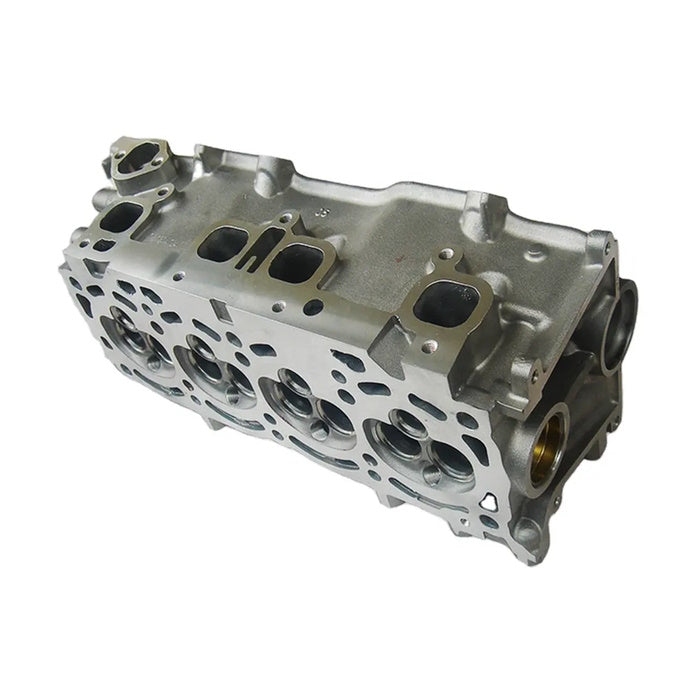Toyota Tazz: Exploring Its Legacy and Continued Appeal Among Drivers
Toyota Tazz: Exploring Its Legacy and Continued Appeal Among Drivers
Blog Article
Discover the current Patterns in Engine Technology Via Tazz
In the rapidly progressing landscape of auto modern technology, Tazz stands at the center, highlighting substantial improvements in engine systems that prioritize both innovation and sustainability. From crossbreed engines that enhance fuel effectiveness to the emergence of hydrogen gas cells, the fads forming modern powertrains are not just boosting performance but additionally attending to vital environmental obstacles.
Hybrid Engine Innovations
Hybrid engine technologies represent a pivotal change in automobile technology, integrating the benefits of inner combustion engines with electrical propulsion systems. This combination not just improves gas performance yet likewise reduces discharges, meeting progressively stringent ecological policies. By making use of both energy resources, hybrid engines can optimize efficiency, delivering power when needed while preserving fuel throughout less demanding motoring conditions.
Current advancements in crossbreed modern technology include renovations in battery efficiency and regenerative stopping systems. These technologies permit better energy healing throughout deceleration, which can be redirected to aid in acceleration or power auxiliary systems. Makers are concentrating on small layouts and light-weight materials to take full advantage of the effectiveness of crossbreed powertrains.
The development of plug-in hybrids has also broadened the marketplace, making it possible for drivers to charge their cars utilizing common electric outlets. This attribute often permits considerable all-electric variety, additional reducing reliance on standard gas. tazz. As the vehicle sector proceeds to advance, hybrid engine technologies are anticipated to play an important function in connecting the space between traditional automobiles and completely electric designs, offering a transitional service that deals with diverse consumer needs and choices
Breakthroughs in Electric Powertrains
The auto landscape is rapidly evolving, with electric powertrains arising as a leading pressure in lasting transport. Developments in electrical car (EV) innovation are significantly boosting performance, performance, and user experience. Key innovations consist of enhancements in battery chemistry, which have actually boosted energy thickness, minimized charging times, and expanded overall battery life.
Solid-state batteries, as an example, guarantee to revolutionize the marketplace by offering better security and effectiveness contrasted to standard lithium-ion cells. Innovations in regenerative braking systems are making it possible for vehicles to recuperate power during slowdown, adding to overall effectiveness.
Along with battery innovation, electrical motor layouts are becoming a lot more innovative. Developments such as incorporated electric motors and progressed thermal management systems are assisting to maximize power delivery and decrease weight, eventually boosting lorry dynamics.

Collectively, these developments highlight the commitment to shift towards cleaner, more efficient transport remedies, placing electrical powertrains at the leading edge of automobile development.
The Rise of Hydrogen Fuel Cells
Increasingly, hydrogen gas cells are obtaining grip as a feasible option to standard interior combustion engines and battery electrical automobiles. This innovation utilizes the chemical energy stored in hydrogen, transforming it right into electrical energy with an electrochemical reaction with oxygen. The main by-product of this process is water, making hydrogen gas cells an eco pleasant choice with no emissions at the tailpipe.

Automakers are progressively buying hydrogen gas cell technology, recognizing its possibility for long-range applications and fast refueling capabilities that match standard gas. In addition, sectors such as heavy-duty transport and public transportation are especially fit for hydrogen gas cells, where battery electrical solutions may fall short due to weight and range restrictions.
As research study and financial investment proceed to increase, hydrogen gas cells are positioned to play a substantial duty in the future landscape of tidy transport and power options.
Enhancements in Internal Burning Engines
Technologies in inner burning engine (ICE) modern technology are changing standard automobiles to satisfy contemporary environmental requirements and performance expectations. Among one of the most considerable improvements entails the assimilation of innovative gas injection systems. These systems enhance the air-fuel mix, improving burning performance and leading to minimized discharges. Direct gas shot, for instance, allows for better atomization of gas, causing more complete burning and improved power output.
Additionally, turbocharging has actually acquired prominence, permitting smaller engines to supply higher efficiency without the weight of larger engines - tazz. This modern technology not only enhances effectiveness but likewise contributes to reduce fuel usage. Variable shutoff timing systems are likewise being improved, allowing engines to adjust to different driving problems for improved torque and responsiveness
Additionally, using lightweight products in engine construction is coming to be click resources basic, more enhancing fuel performance by decreasing general automobile weight. Engine control units (ECUs) are progressively innovative, enabling real-time modifications that maximize performance and discharges.
These improvements jointly represent an essential change in ICE technology, lining up with international sustainability objectives while still offering the performance vehicle drivers anticipate from their cars. As the market advances, these renovations continue to shape the future of standard auto design.
Future Trends in Engine Efficiency
Considerable improvements in engine performance are prepared for as manufacturers focus on integrating advanced innovations to satisfy rigid ecological guidelines and customer needs. The change in the direction of electrification, crossbreed systems, and alternate gas is improving the vehicle landscape, driving advancements that boost gas economic situation and lower exhausts.
Among the crucial patterns is the application of sophisticated materials and manufacturing techniques. Lightweight compounds and high-strength alloys contribute to decreased car weight, thus improving total effectiveness. Furthermore, the adoption of turbocharging and variable valve timing modern technologies permits for enhanced power outcome from smaller engines, further boosting gas economy.

Verdict
Advancements in hybrid engine systems, click electrical powertrains, and hydrogen gas cells show a dedication to reducing discharges while improving efficiency. Renovations in inner combustion engines and a focus on discover this lightweight materials contribute to general engine effectiveness.
From crossbreed engines that maximize gas performance to the appearance of hydrogen gas cells, the trends shaping modern powertrains are not only enhancing performance but also dealing with vital ecological difficulties.Hybrid engine advancements represent a critical shift in automobile innovation, combining the benefits of internal burning engines with electrical propulsion systems.In addition, turbocharging has actually gotten importance, enabling smaller engines to deliver greater efficiency without the weight of larger engines. Additionally, the adoption of turbocharging and variable shutoff timing modern technologies permits for enhanced power output from smaller engines, better boosting fuel economy.
Improvements in inner burning engines and a focus on lightweight products add to general engine efficiency.
Report this page